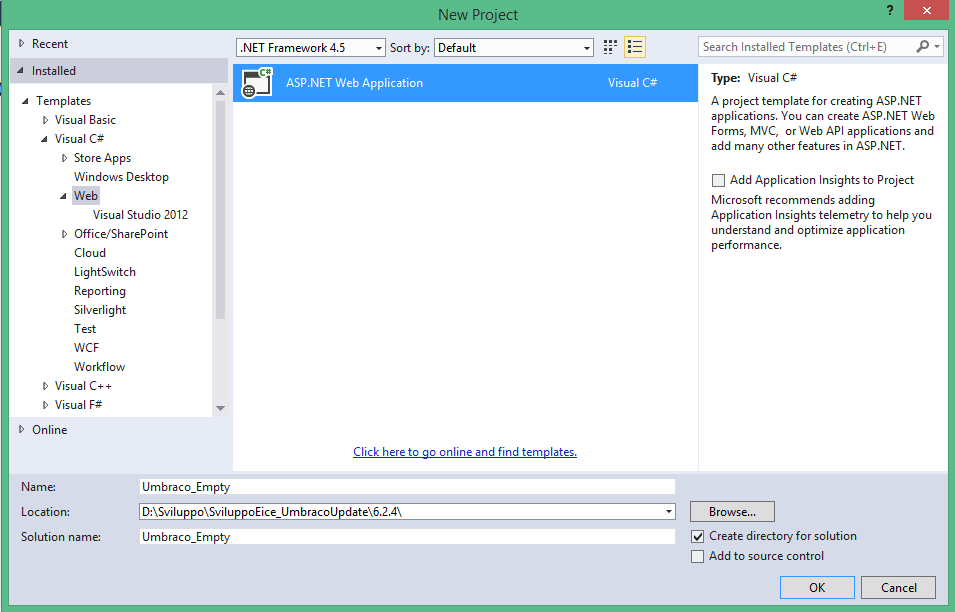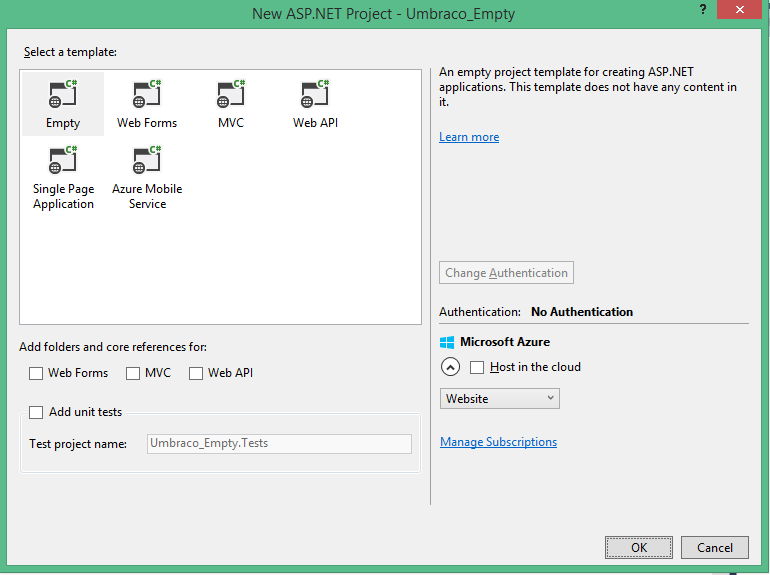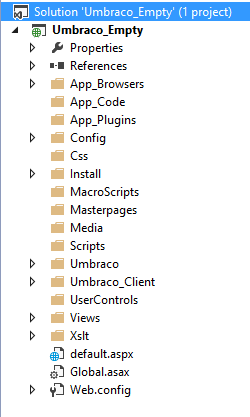I order to have a “to-be” database to compare with, I’ve made a basic Umbraco installation from scratch. here are the steps done:
- I’ve downloaded the Umbraco latest release (.zip)
- I’ve unzipped Umbraco release in a local folder. For simplicity I’ve created an “umbraco_original” folder, that I’ve used also as backup of original code
- I’ve created a new database on SQL Server 2008 R2
- I’ve created a new Empty Web Project (.NET 4.5) in Visual Studio


- I’ve copied all the content of umbraco_original folder under my project root folder
- I’ve included files and folders to my project

- I’ve modified web.config to point my new database instance
- I’ve compiled solution and run (F5)
- The first run opened the installer that I’ve followed till the end, creating a new working application and database
<connectionStrings>
<remove name="umbracoDbDSN"/>
<add name="umbracoDbDSN" connectionString="server=yourserver;database=yourdb;user id=useradmin;password=password" providerName="System.Data.SqlClient" />
</connectionStrings>
That’s all.
Very easy, but, anyway, I’ve documented it, because it costed less than remembering it every time I needed to recreate original installation.
And I didn’t want to waste my time in so simple (and with low value) tasks. So, my lesson learned (in previous experiences) is document everything in this kind of prototyping.
It’s cheaper than not doing it.
Comments